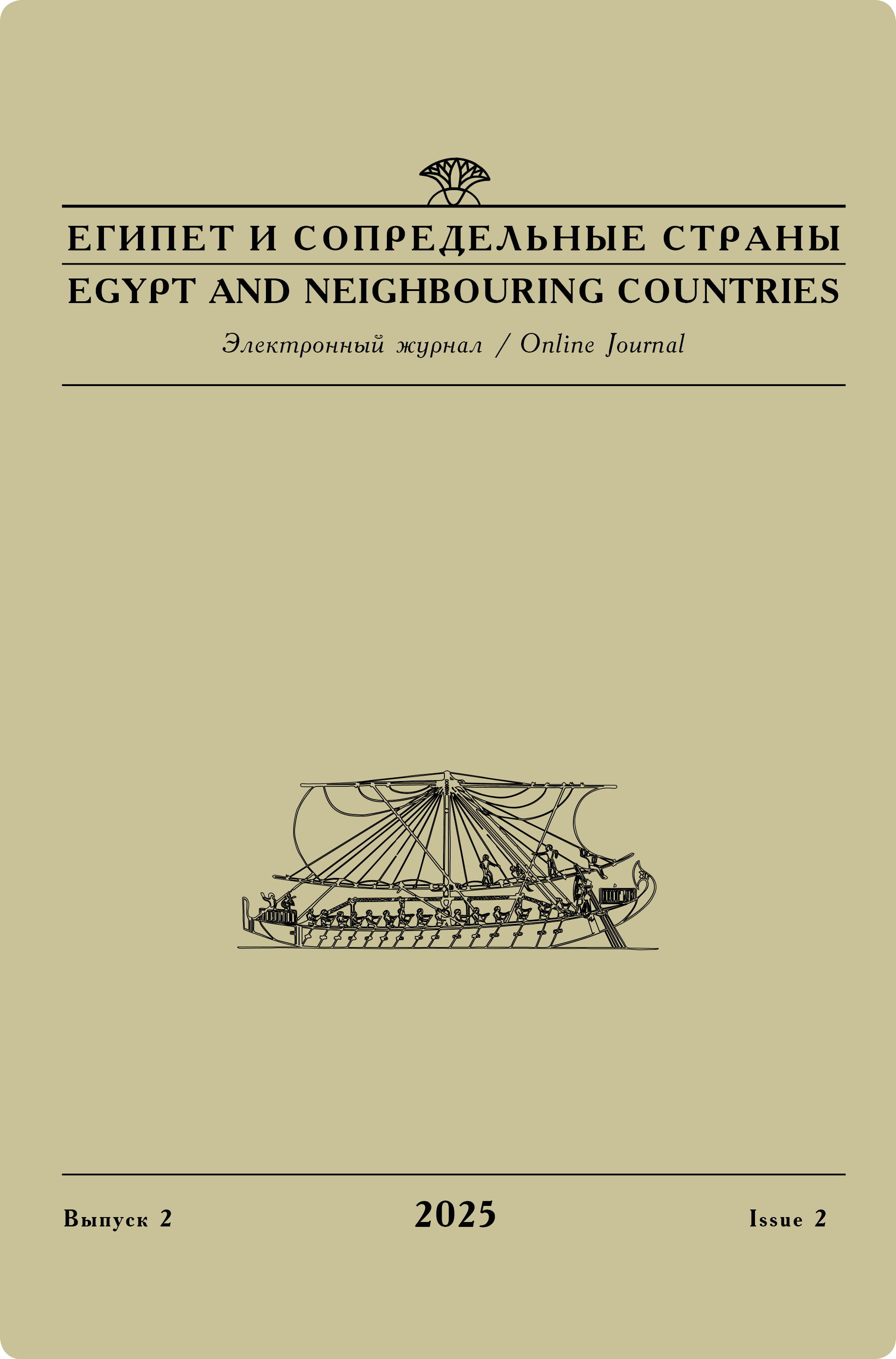Issue 1, 2022
R. A. Orekhov
O nekotorykh prirodno-ekologicheskikh faktorakh upadka severnoi stolitsy Egipta — Per-Ramsesa [Several nature and ecological factors of fall of an Egyptian northern capital — Pi-Ramesses]
Basing on new paleoclimatic and paleoecological reconstructions, an author of this article seeks to show that fall of a northern capital of Egypt — Pi-Ramesses — could be caused by several interrelated factors, primarily decrease in Nile flood activity and climate warming inspired by El Niño Southern Oscillation (ENSO). The first one led to social destabilization in Upper Egypt and, probably, country as a whole in the second half of the 20th Dynasty. Climate warming adversely affected an ecological situation in the Northeast Delta. Proximity to the coast made Pi-Ramesses vulnerable: poisonous red algae polluted the river and destroyed surrounding fauna. High population density in a situation of low floods caused excessive anthropogenic pressure on the Pelusian channel and its gradual siltation. Many infectious diseases appeared threatening health and life of people and livestock. All of these could predetermine fall of Pi-Ramses and subsequent transfer of the northern capital from there to Tanis.
Keywords:
Pi-Ramses, M. Bietak’s theory, paleoecological reconstruction of D. Ehrenkranz and D. Sampson, El Niño Southern Oscillation.
Original language — Russian.
DOI: 10.24412/2686-9276-2022-00001.
Referring: Orekhov R. А. Several nature and ecological factors of fall of an Egyptian northern capital — Pi-Ramesses [in Russian] // Egypt and neighbouring countries 1 (2022): 1–10. DOI: 10.24412/2686-9276-2022-00001.
Read full article




